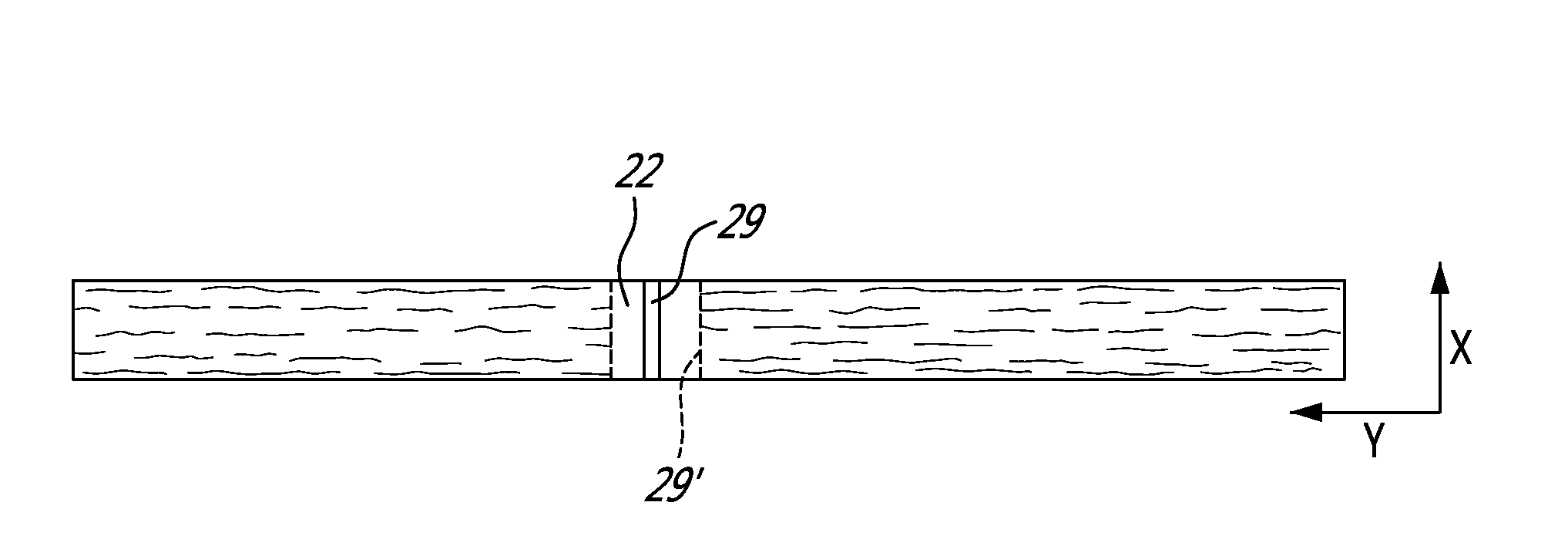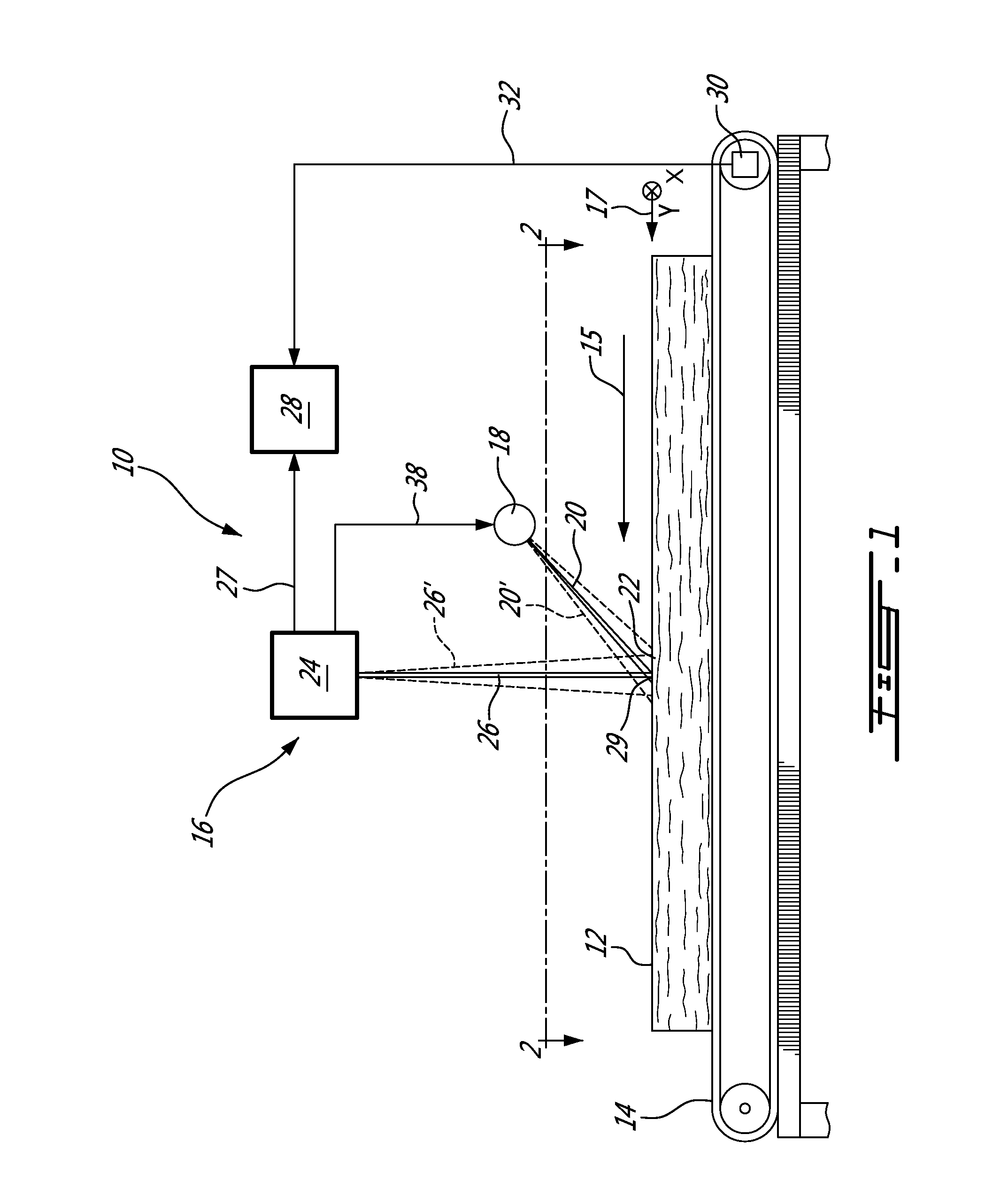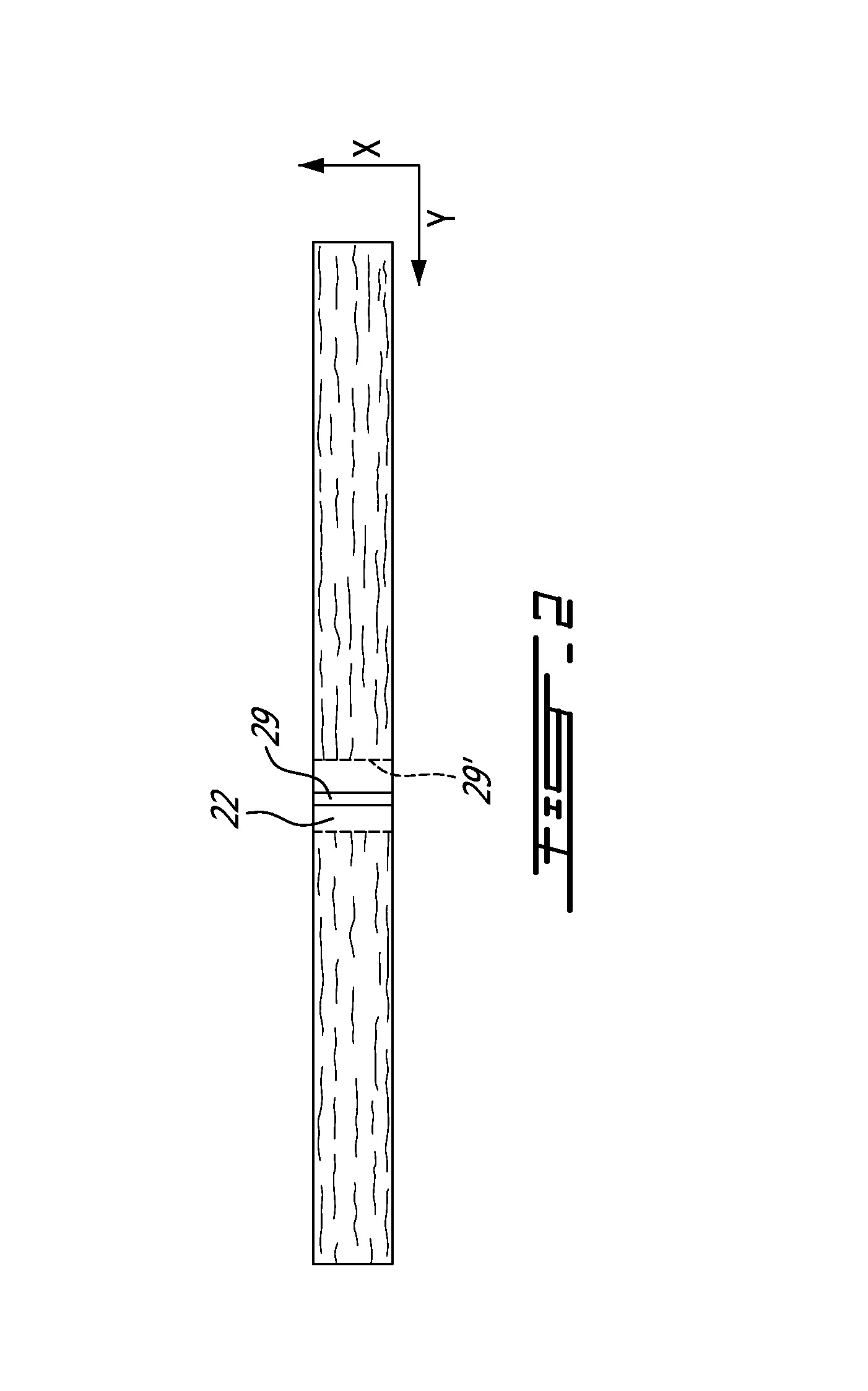Optical method and apparatus for identifying wood species of a raw wooden log
a wood species and optical method technology, applied in the field of optical measurement techniques, can solve the problems of inability to practice laboratory techniques in mill environments, inability to provide wood species identification in real-time, and time-consuming manual inspection and other problems, to achieve the effect of improving the accuracy of wood species identification
- Summary
- Abstract
- Description
- Claims
- Application Information
AI Technical Summary
Benefits of technology
Problems solved by technology
Method used
Image
Examples
example 1
[0037]Table 3 presents species classification rates obtained with a neural network such as described above, from a laboratory trial involving validation and classification sets of 60 logs each, containing about 50% spruce and 50% fir, from each of which logs a set of color images were captured and subdivided in 64×64 pixels image regions for analysis.
TABLE 4Accurate species detection (per region)TotalC1 - SpruceC2- FirTraining set69.2%63.1%74.1%Validation set66.4%66.1%66.7%
[0038]It can be appreciated from Table 5 giving the obtained species classification rates for 24 logs representative of the validation set as grouped according to their predetermined species, that species detection errors are seldom made (logs nos. 22 and 44) so that species detection accuracy over 90% (10 / 11 for spruce, 12 / 13 for fir) is obtained for both spruce and fir classes as shown in Table 6.
TABLE 5Accurate species detection (with grouping)Log IDClassDetectionC1 (%)C2 (%)21164.1%35.9%41178.1%21.9%61151.0%49...
example 2
[0039]A classification trial was performed at a log processing plant, wherein a set of 176 spruce logs and 38 fir logs were visually identified by a skilled sorting operator, totalizing 214 logs, from which 1600 images were captured. A representative number of 112 images were first selected, from which 58 and 54 were respectively associated with spruce species and fir species, and then subdivided into 64×64 pixel regions. The resulting image data were used as a training set for species classification with a neural network such as described above. Amongst the remaining images, a representative number of 372 images were selected to constitute a validation set for the neural network, the resulting classification being illustrated (class 1: spruce; class 2: fir; claim 3; other) by the confusion matrix shown in FIG. 6, according to which 89.1% and 87.7% of the identified spruce species and fir species respectively, were accurately classified (target class) when compared with actual speci...
PUM
 Login to View More
Login to View More Abstract
Description
Claims
Application Information
 Login to View More
Login to View More - R&D
- Intellectual Property
- Life Sciences
- Materials
- Tech Scout
- Unparalleled Data Quality
- Higher Quality Content
- 60% Fewer Hallucinations
Browse by: Latest US Patents, China's latest patents, Technical Efficacy Thesaurus, Application Domain, Technology Topic, Popular Technical Reports.
© 2025 PatSnap. All rights reserved.Legal|Privacy policy|Modern Slavery Act Transparency Statement|Sitemap|About US| Contact US: help@patsnap.com



